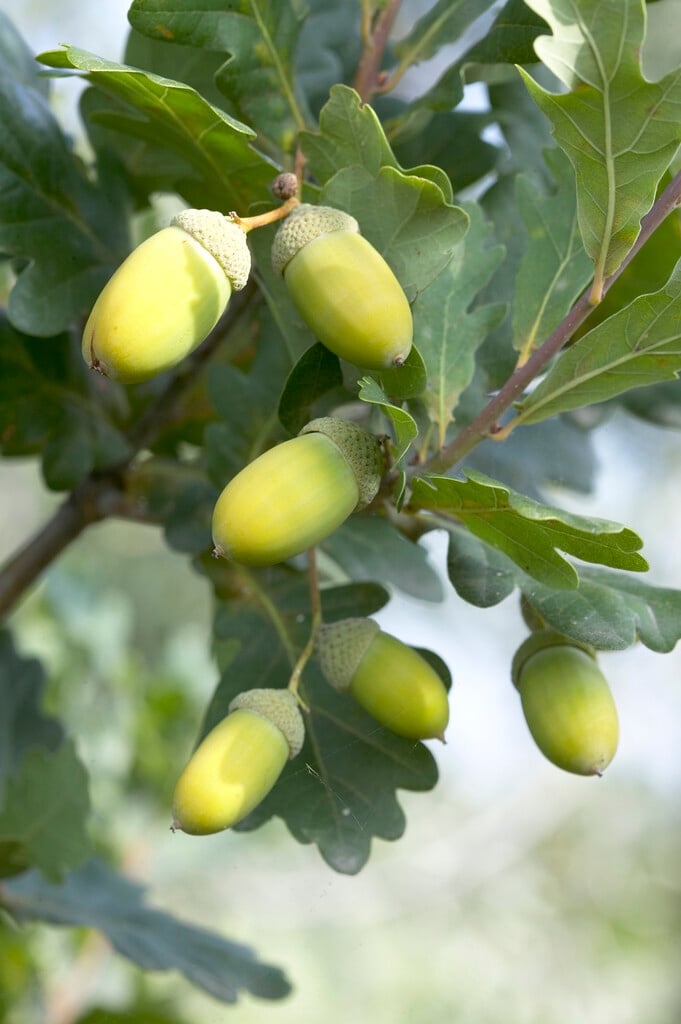Quercus robur (Fastigiata Group) 'Koster'
oak 'Koster'
A fastigiate form with upright branches, spreading with age to ultimately reach approximately 20m high and 3m wide. Usually seed-raised so can be variable. Leaves are dark green with shallow lobes
Other common names
oak 'Fastigiata Koster'Synonyms
Quercus robur 'Kosteri Fastigiata'Quercus robur 'Fastigiata Koster'
see moreQuercus robur f. fastigiata 'Koster'
Size
Ultimate height
Higher than 12 metresTime to ultimate height
more than 50 yearsUltimate spread
1.5–2.5 metresGrowing conditions
Moisture
Moist but well–drained, Well–drainedpH
Acid, Alkaline, NeutralColour & scent
| Stem | Flower | Foliage | Fruit | |
| Spring | Green Yellow | Green | ||
|---|---|---|---|---|
| Summer | Green | |||
| Autumn | Brown | Brown | ||
| Winter |
Position
- Full sun
- Partial shade
Aspect
West–facing or East–facing or South–facing or North–facing
Exposure
Exposed or Sheltered Hardiness
H6Botanical details
- Family
- Fagaceae
- Native to GB / Ireland
- No
- Foliage
- Deciduous
- Habit
- Columnar upright
- Potentially harmful
- Pets (dogs): Harmful if eaten - for further information and contact numbers regarding pets, see the HTA guide to potentially harmful plants
- Genus
Quercus can be deciduous or evergreen trees or shrubs, with entire, lobed or toothed leaves; flowers inconspicuous, followed by characteristic acorns; sometimes good autumn colour
- Name status
Accepted
How to grow
Cultivation
Grows well in most deep, fertile soils and is lime tolerant
Propagation
Propagate by seed, sown as soon as ripe, in a cold frame
Suggested planting locations and garden types
- Cottage and informal garden
- Low Maintenance
Pruning
Pests
May be susceptible to oak processionary moth, aphids, caterpillars, leaf-mining moths and oak gall wasps
Diseases
May be susceptible to powdery mildews and honey fungus
Get involved
The Royal Horticultural Society is the UK’s leading gardening charity. We aim to enrich everyone’s life through plants, and make the UK a greener and more beautiful place.
